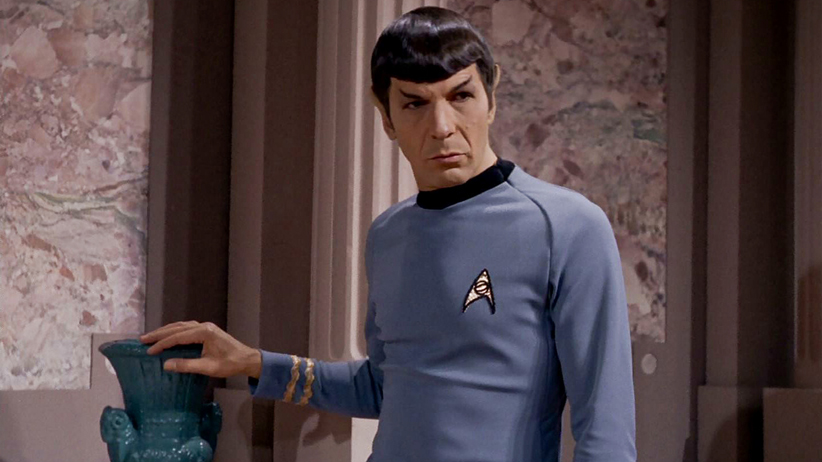Leonard Nimoy: He lived long and prospered
Mr. Spock was a character for the whole world, writes Jaime Weinman
Share

This article was originally published on Feb. 27, 2015, the day Leonard Nimoy died.
Leonard Nimoy has died at the age of 83, and everyone is sad. Not just Trekkies, not just science-fiction fans—everyone. Some science-fiction characters have specialized appeal, but Mr. Spock was a character for the whole world.
Of the three main actors on Star Trek, Leonard Nimoy was the only one to appear in the original pilot. He also appeared in J.J. Abrams’s Star Trek reboot movie, so you could say Mr. Spock was the first and last character from the original series. He’s also probably the most influential. Captain Kirk was the hero, but we’d seen heroes like him before. Spock became the No. 1 cult figure on the No. 1 cult TV show of all time. Many characters—humans, robots, humanoid robots—were created as thinly disguised copies of Spock and his primary contradiction: He’s someone who believes he should be a creature of pure logic, but has trouble suppressing his human, emotional side. Really, every time you see a super-intelligent, anti-social character who is more human than he or she lets on—such as Brennan on Bones or Sheldon on The Big Bang Theory—you’re seeing the influence of Leonard Nimoy’s Spock.
And while all credit is due to the writers for developing that character, it’s Nimoy who made the character so fascinating (as Spock himself would say). His performance, his ability to suggest Spock’s emotional side underneath his logical one, really transcended the limits of 1960s television. Star Trek had no inter-episode continuity or ongoing character development; anything we learned about a character in one episode was probably never going to be mentioned again, and the relationship between Kirk and Spock, while always important, never actually advanced. That’s just the way most TV dramas were written then; Star Trek was an anthology drama in disguise, with unchanging characters in front of changing settings.
But Nimoy was so good, and Spock was so unique as a character, that the fans imbued him with a depth the writers didn’t actually give him. Star Trek had one of the first great fan-fiction cults, because fans saw so much potential in Spock—in his background, in his relationships with Kirk and McCoy—that they filled in the blanks the writers left, and made the connections between the episodes; they created, in effect, a continuity where there was none. And this take on the characters helped to influence the way they were written in the movies, particularly Star Trek II, which feels like the culmination of Spock’s story, the summation of what he is and what he means to the viewers.
But none of it would have happened if Nimoy himself hadn’t been able to suggest more than the writers put in; he gave the impression that the character was too big, too deep, to be contained by the limits of a self-contained 50-minute episode. With his performance, he showed how a pop-culture character can inspire imagination and creativity in others, and turn supposedly passive TV viewers into active thinkers.
Nimoy also had the most successful post-Star Trek career of the cast, branching out into directing, including one of the biggest hit movies of the 1980s, Three Men and a Baby. And his voice acting in the Simpsons episode “Marge vs. the Monorail” (where he was, strangely, a last-minute replacement after George Takei turned it down) is almost as frequently quoted by people my age as any episode of Star Trek. But, as Nimoy himself had to admit, he’ll always be Spock, and he had an impact on popular culture that few TV characters have. You may prefer another Star Trek show, or another Star Trek character, but when it comes to influence and impact, no character—really, very few characters in TV history —can compare to Spock.